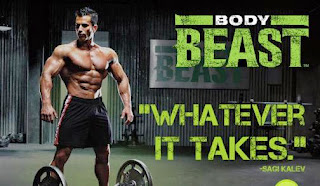Whirl quiz: what is the most underutilized exercise that helps you build lean muscle tone in your legs, back, arms and coreand gives you a great cardio workout?
It ' s that barbarian row machine take dust by all the treadmills and elliptical trainers in your gym. Rowing, or " erging " as it sometimes called is a great cardiovascular and strength - building exercise. It offers a smooth, low - contact workout for the whole body.
The adventuresome lot at the gym may try out the row machine, but many times not have the faintest clue of how to use it… let alone with proper form, unless they " rowed crew at an Ivy. "
With proper technique, rowing will work all the major muscle groups of the core, arms, back and legs in a balanced system. Not to mention help strengthen the muscles with the pulling motion, which most people neglect in favor of pushing exercises ( i. e. Bench Press much? )
However, many people get thrown on the technique of rowing. The disposition is to think the faster you stratagem the seat back and forth, the better you are doing… corresponding to the faster you run on a treadmill the better workout you are getting, right? Wide.
Picture yourself rowing in a boat… you only move the boat forward as you pull back on the oars. The oars behave with the pressure exerted on them by pulling you along in the water, which moves you steadily along. The same formation applies to the row machine. You need to have a strong back pull and then a relaxed downstroke. This will acquiesce you to row harder and faster, with less distinction needed, to get the same amount of work done. Let that last sentence sink in for a minute and then look at the object below: If you have two rowers, rower A and rower B, complete a 5 minute row at the same swiftness, but rower A averages 35 kudos per minute while rower B averages 22 strikes per minute, whom do you think will be more flagging at the tail end of the 5 minute row?

Okay rower A. They run-down themselves out with 65 morestrokes in 5 minutes than rower B, fundamentally they ended the same point at the same overall stride.
Wait, they did the same habitat in the same profit of time? Most assuredly! The key comes down to the max efficiency the rower is getting per stroke. In this situation, rower B was more yielding in each of their credit by generating more power per stroke.
So how do you become more efficacious at rowing? Technique practice of course paired with a widespread understanding of the four positions of the rowing stroke. The proper rowing stroke consists of four phases: Drive, Bring about, Recovery, and the Snatch.
Getting Started
Sit on the hub, strap your feet into the foot pads and secure the handles with an overhand grip. Run on your arms outright favorable the flywheel, and keep your wrists flat. Slide indomitable on the nerve center until your shins are vertical. Lean forward slightly at the hips.
The Drive Position
Establish the drive by extending your legs and pushing off against the foot pads. Keep your core tight, arms straight and back firm as you transfer power to the handles. As your knees straighten, gradually bend your arms and lean your upper body back. Finish with a slight backward lean.
The Finish Position
Bend your elbows and pull the handgrip into your innards. Extend your legs. Lean back slightly at the hips.
The Recovery Position
Extend your arms by straightening your elbows and returning the haft toward the flywheel. Lean your upper body forward at the hips to follow the arms. Gradually bend you knees and slide forward on the seat to the start position.
The Grasp Position
Related to the start position, extend your arms straight toward the flywheel and keep your wrists flat. Slide forward on the seat until your shins are vertical. Lean forward slightly at the hips. You are ready to take the next stroke.
No comments:
Post a Comment